Opinion
Teachers deserve better deal

By VIJAYA KUMAR
The teachers’ strike is now a month old, and the government’s strategy appears to play for time; by holding out a promise of a solution in next year’s budget, while using repression to obstruct activists and frighten teachers involved in the strike.
The teachers’ strike has had the effect of disrupting whatever little education that was being delivered through an imperfect online approach, abounding with deficiencies. Parents who are disturbed by the impact it is having on their children’s education, are faced with the question as to whether the demands and actions of teachers are just, especially during the economic crisis the country is facing today.
Before we decide whether their demands are justified, we should be aware of how much teachers are paid today? The salary scale of a teacher with the lowest qualification for teaching, a GCE (A/L), starts at Rs. 27,740 a month, which with Rs 7,800 allowances (including Rs 2,500 paid from July 2019) totals Rs 35, 540. After 15 years of service he/she reaches the maximum of Rs. 33,090 (Rs 40,890 with allowances).
A graduate teacher starts at Rs. 34,290 (Rs. 42,090 with allowances) which becomes Rs, 45,050 (Rs. 52,850 with allowances) after 15 years of service.
These salaries were fixed five years ago, and in that period the CPI cost-of-living index rose 30% from 110.0 to 143.1. The allowance of Rs 2,500 paid in July 2019 compensated teachers by between 5 and 7.5 percent of their salaries. After the Rs. 2,500 was paid in 2019, the CPI has risen by 10%.
These salaries are no doubt unsatisfactory on the basis of their educational levels being slightly above the salaries of the lowest paid category in the country, the plantation workers who receive Rs. 1000 per day.
Even the government realises that teachers deserve a better deal. A government newspaper has reported that a Cabinet memorandum to provide better salaries to teachers was to be submitted in February 2020 by the then Education Minister Dullas Alahapperuma. Present Education Minister, Prof. G.L. Peiris confirmed in Parliament in November 2020 that Cabinet approval had been granted on March 5, and the salary anomaly of principals and teachers would be rectified; indicating further that the Treasury had agreed to provide funds for an interim allowance to be paid, until the National Salaries Commission finalised teacher pay scales. He stressed the ‘big effort’ he had to make to be able to get the allowance approved, while appreciating teacher co-operation in conducting the GCE (A/L) Level and Year Five Scholarship Examinations, and concluded by saying that “steps will be taken to place principals and teachers at a dignified salary scale by rectifying their salary anomalies.” However, the interim allowance has still not seen the light of day.
Many government ministers have commented that the demand by government teachers is just, but that this was not the time to make the request or to strike given the Covid-19 situation, while re-assuring teachers that their problems will be dealt with in the next budget.
So, as far as teachers’ salaries are concerned, it has always been a case of jam tomorrow, never today. It is the frustration of not seeing promises fulfilled and the realization that talks and delays will not solve their immediate problems that made them resort to and continue striking – something teachers with their concern and empathy for students very rarely do. And they cannot be blamed for taking the opportunity to press their demands.at a time when the government is perceived as having difficulties and becoming unpopular.
The argument that teachers need to delay their actions because of the Covid-19 pandemic and the financial crisis faced by the government, appears to be valid. But when such arguments are put forth by the Ministers who had no qualms about authorising the importatio of hundreds of SUVs worth Rs. 3.7 billion for the MPs and approving funding for massive unsolicited projects promoted by their colleagues.
The minimum qualification to enter the teacher service is the GCE (A/L), but the MPs many of whom lack a GCE (O/L) and are actively preventing the release of data on their educational qualifications, are estimated to be paid more than Rs. 250,000 per month. Apart from the Rs 80,000 allowance and sittings fee, they receive many allowances, or should they be called grants, which they do not have to account for like Rs 50,000 for phone expenses, Rs 100,000 to maintain an office, and a distance based fuel allowance with a minimum of Rs 30,000 for Colombo district MPs.
Only the teachers seem to have been denied salary increases. CEB employees were given a 25% pay hike a few months ago, and those in the Water Board got even more. Since August 2019, after General Shavendra Silva took over as Army Commander, over 2,500 officers (a third of the cadre) and 55,000 other ranks (more than half the cadre) were given promotions to mark various anniversaries. Similarly, a quarter of Air Force officers and a fifth of the airmen were given similar promotions on the occasion of the 70th anniversary of the Air Force earlier this year. Anybody who has worked in government will know how the Treasury will pounce on institutions and oppose efforts to give promotions on such a basis. The Treasury seems to have a different set of rules for the armed forces.
It is, therefore, obvious that all these excuses are part of a strategy to dupe the teachers once again; any let-up in their struggle due to the use of archaic quarantine laws by the government, will mean teachers will be left with low pay and salary anomalies.
In the interests of the future of education in the country, and of students in government schools, the government should make arrangements to pay teachers the promised interim allowance for which funding is available according to Minister Peiris, and work towards ensuring that teachers’ problems are settled in the next budget.
(Dr. Vijaya Kumar, is former Dean of the Faculty of Science, is Professor Emeritus at the University of Peradeniya)
Opinion
Learning from global models to address flooding and water shortage in Sri Lanka

by Sudharman Siripala
Sri Lanka is grappling with the increasing threat of climate change, which has led to unpredictable weather patterns. The country faces a dangerous combination of flooding in some regions and water shortages in others, a situation exacerbated by shifting rainfall patterns. Rivers originating in the Central Hills, such as the Mahaweli, Kalu, and Kelani, flow through much of the country, but these water sources are not being distributed evenly. Districts like Monaragala and Hambantota, located in the dry zone, are experiencing severe water shortages. To address this challenge, experts suggest the development of an interconnected river system to harness excess water during floods and redirect it to drier areas, ensuring a year-round water supply for agriculture and daily use.
Global Case Studies in River Management
Several countries facing similar water-related challenges have implemented successful water management systems that Sri Lanka could adapt to its unique circumstances:
The Netherlands – Room for the River Programme
The Netherlands, a country prone to flooding, widened its rivers and relocated dikes to create floodplains. This approach allows rivers to overflow without damaging urban areas, while preserving water flow and natural habitats. Sri Lanka could apply this concept by designating specific riverbank areas for temporary flood storage.
China – South-North Water Transfer Project
China’s massive project channels excess water from the flood-prone Yangtze River to drier northern regions. This system of canals and reservoirs could inspire Sri Lanka to divert water from rivers in the Central Hills to drier areas in the south and east.
Bangladesh – River Interlinking Projects
Bangladesh has implemented river interlinking projects to redistribute water from flood-prone rivers, such as the Brahmaputra, to drier regions. Sri Lanka could link its major rivers like the Mahaweli and Kelani to smaller rivers in water-scarce districts to balance water distribution.
India – National River Linking Project
India’s National River Linking Project connects major rivers to manage both floods and droughts. Sri Lanka could use similar strategies, connecting rivers around the 500-foot contour line in the Central Hills to help distribute water more effectively.
United States – Mississippi River and Tributaries Project
The Mississippi River system combines levees, floodways, and diversion channels to manage flooding. Sri Lanka could adopt similar flood-control measures in vulnerable river basins such as the Kelani and Kalu.
Japan – Underground Reservoirs and Flood Channels
Japan’s G-Cans Project in Tokyo channels excess water into underground reservoirs to prevent urban flooding. A similar underground system could be implemented in Colombo and other flood-prone cities in Sri Lanka.
Singapore – Marina Barrage
Singapore’s Marina Barrage serves as both a flood control measure and a water supply resource. Sri Lanka could develop similar systems to control flooding in urban areas and ensure water availability during dry spells.
Thailand – Chao Phraya River Basin Management
Thailand uses diversion channels in the Chao Phraya River Basin to prevent flooding in Bangkok and direct water to agricultural areas. Sri Lanka could replicate this by creating diversion channels to supply water to its agricultural zones.
Actionable Solutions for Sri Lanka
Develop an Interconnected River System
Establish water diversion channels along the 300-500 meter contour lines of the Central Hills to capture excess rainfall during floods and redirect it to drier areas.
Build Reservoirs and Storage Tanks
Construct reservoirs to store diverted water, ensuring a steady supply for agriculture and domestic use. Sri Lanka has around 14,000 ancient tanks out of 30,000 that could be revitalized for this purpose.
Improve Urban Flood Defenses
Drawing inspiration from Japan and Singapore, build underground reservoirs and flood channels in cities like Colombo to mitigate urban flooding.
Strengthen Watershed Management
Restore natural floodplains and create wetlands to absorb excess rainwater, as seen in the Netherlands, helping to reduce flood risks.
Encourage Public-Private Partnerships
Foster collaboration between the public and private sectors to fund large-scale water management infrastructure, leveraging models from China and the United States.
Leverage Technology
Utilise modern forecasting and real-time water management systems, similar to those in Bangladesh and Thailand, to monitor water levels and manage river flows dynamically.
International Collaboration
Form partnerships with countries that have successfully implemented flood control and water management systems to share expertise and technology.
Sri Lanka’s dual challenges of flooding and water scarcity, compounded by climate change, require immediate action. By developing an interconnected river system and learning from successful global water management models, Sri Lanka can mitigate the effects of floods while ensuring a sustainable water supply for agriculture and daily life. It is crucial for the country to act now, as these solutions have the potential to transform Sri Lanka’s water management system for the better.
Sudharman Siripala Managing Director of Geoinformatics Group and a Registered Licensed Surveyor, specializes in geo-spatial applications. He also serves as a freelance value chain consultant for Vivonta Green Tech Consultants (www.vivonta.lk)
Opinion
Doctor’s plight

Some people have found fault with a female doctor for not coming forward to identify her rapist and help make him pay for his crime.
Do they not realise the emotional toll of facing her rapist again?
There should be a way for survivors to testify directly to the judge without enduring such distressing encounters. Making a victim relive her trauma in this manner is akin to subjecting her to the ordeal all over again.
A Ratnayake
Opinion
Developing attitudes of schoolchildren for development
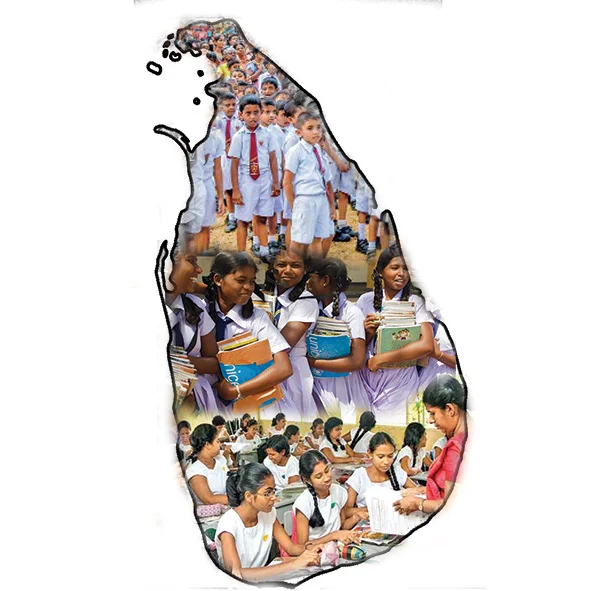
Sri Lanka was once at an economically comparable level with some of the world’s most developed countries in the 19th century. However, despite our country’s potential, we are still striving to fully develop. Many people often blame politicians, government officers, or various sectors for the situation. However, I believe the root cause of these issues lies not in any individual or group, but in the lack of good attitudes within our society.
We are investing significant resources into our education system, which is funded by the taxes of hard- working citizens. However, when we examine the outcomes, we realise that the academic achievements of our graduates alone are not enough. There are instances where professionals, despite having the necessary qualifications, fail to uphold ethical standards. In some cases, this even results in malpractice or harmful actions that damage our country’s reputation and progress. This highlights the gap between academic success and real-world responsibilities.
The education system, which is currently focused on competitive exams and rote learning, does not emphasise the development of attitudes and character in students. While our students are academically capable, many lack the qualities required to contribute positively to society. This lack of focus on social values, such as patriotism, selflessness and respect for elders, is holding us back from achieving the level of progress we deserve.
To address these concerns, I wrote to His Excellency, the President of Sri Lanka, on 24th September 2024, proposing education reforms that emphasise not only academic qualifications but also attitudes, ethics, and social responsibility. I suggested a holistic approach to university admissions and government recruitment, incorporating moral integrity, character, and extracurricular involvement, key traits for fostering well- rounded, responsible citizens. More importantly, I strongly recommended introducing a compulsory school subject, with both theory and practical components, focused on attitude development, which would be evaluated in university admissions. Encouraging extracurricular participation alongside academics will help shape ethical and socially responsible individuals.
I am pleased to inform you that the President, recognising the importance of these reforms, has directed the relevant ministries (by a letter dated 24th October 2024) to explore integrating these ideas into the education system. This marks a crucial step in transforming the values and attitudes of our youth for the nation’s benefit.
However, meaningful change requires collective effort. Parents, teachers, students, and citizens all play a role in shaping Sri Lanka’s future. Together, we must instill responsibility, ethics, and patriotism in the next generation. I invite you to share your thoughts and suggestions on further enhancing the values and attitudes of our youth. Your feedback will be invaluable in building a brighter future for Sri Lanka, one driven not just by knowledge, but by integrity and character.
Dr. Mahesh Premarathna
Research Fellow, National Institute of Fundamental Studies, Sri Lanka Email: mahesh.pr@nifs.ac.lk
-

 News5 days ago
News5 days agoSeniors welcome three percent increase in deposit rates
-

 Features5 days ago
Features5 days agoThe US, Israel, Palestine, and Mahmoud Khalil
-
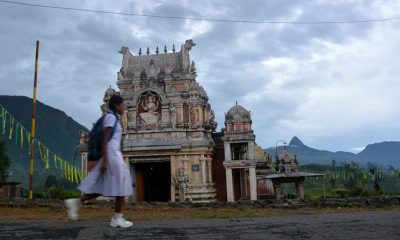
 News5 days ago
News5 days agoScholarships for children of estate workers now open
-
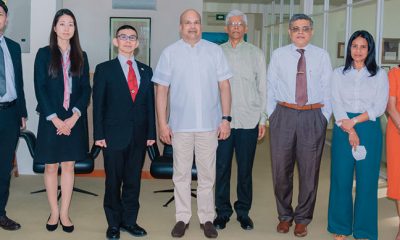
 News6 days ago
News6 days agoDefence Ministry of Japan Delegation visits Pathfinder Foundation
-
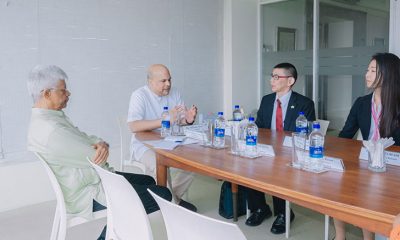
 News5 days ago
News5 days agoJapanese Defence Delegation visits Pathfinder
-
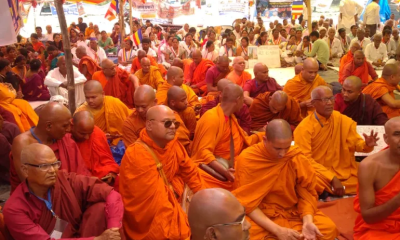
 Foreign News4 days ago
Foreign News4 days agoBuddhism’s holiest site erupts in protests over Hindu ‘control’ of shrine
-

 Editorial6 days ago
Editorial6 days agoWhen promises boomerang
-
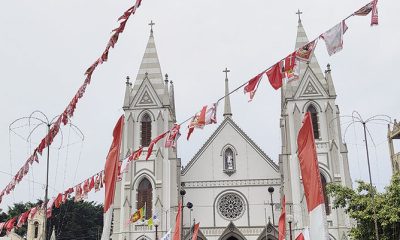
 News6 days ago
News6 days agoBan on altar girls upsets nuns, stirs talk on women’s church roles











